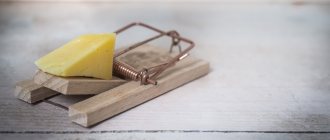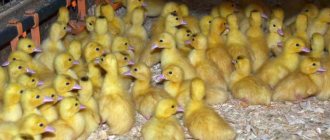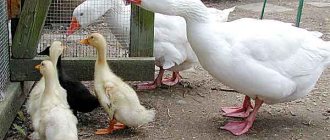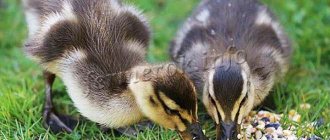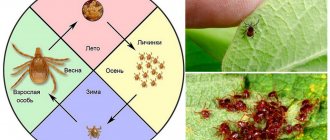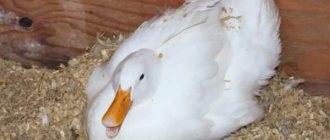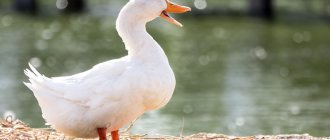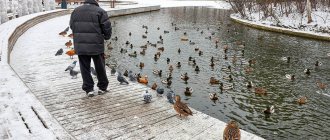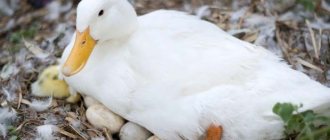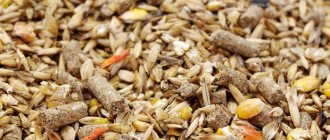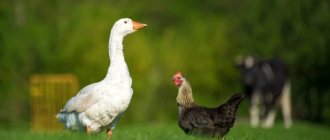Among all the poultry that are in greatest demand among domestic and foreign farmers, ducks occupy one of the most prominent places. And this is quite natural, because the birds in question have many undeniable advantages. They are quite unpretentious, and their meat boasts excellent taste.
Slaughtering ducks at home
In addition, they quickly turn from ducklings into adults, and therefore it is not at all surprising that such a topic as slaughtering ducks at home is consistently popular. Of course, such an event cannot be called pleasant, but in many cases it really cannot be avoided, which makes the disclosure of this topic a completely justified decision.
Preparatory activities
First of all, it should be noted that before killing the selected duck, it is necessary to become familiar with several key conditions, the consideration of which is highly desirable. It is strongly recommended not to ignore them, so that the result of the procedure does not disappoint the bird owner. So, it is not worth slaughtering a duck whose weight and size do not reach the average values. Practice shows that it is best to send this bird for slaughter when it reaches the age of 2-2.5 months (the best slaughter period is 60-65 days). If the optimal age for slaughter is missed, then in the vast majority of cases the meat of such a duck will have a much less pleasant taste.
As for other significant rules that provide for the preparation of this bird for slaughter, their list looks like this:
- Regarding how long the duck should not be fed before slaughter, it is worth noting that this period is within 12-15 hours. Also, if the owner plans to kill the bird in the first half of the day, it can be fasted overnight.
- Regardless of the chosen option for preparing for slaughter, the duck must be provided with free access to water.
- The room chosen for keeping poultry must be illuminated throughout the dark time of the day.
All of the above measures must be taken into account to ensure that the intestines of a duck sent for slaughter are empty.
Keeping Muscovy ducks and at what age are turkey ducks slaughtered for meat?
Many livestock breeders are interested in how long to keep poultry and when can a turkey duck be used for meat? The Muscovy duck has a number of advantages over other types of poultry:
- It is distinguished by high survival rates.
- Indo-ducks do not require special conditions of detention. To grow them, a small, warm, ventilated shed without open drafts will be sufficient.
- Although these birds are considered waterfowl, there is no need to build special reservoirs for them. They feel great in small open areas, and a regular trough will be enough for them to bathe.
- They are not shy, do not cackle or panic at the sight of people, making Indian ducks very comfortable to keep.
- Muscovy duck is unpretentious in food. The bird easily eats all types of food offered to it.
- Muscovy duck eggs can be eaten. Each duck lays up to 100 eggs per year, each weighing 70 grams.
- Indo-duck can be cut as early as 2.5-3 months. It is at this age that poultry meat reaches maturity and its taste improves.
Important! It is worth noting that birds can pluck each other’s feathers due to a lack of vitamins. In this case, it is necessary to diversify their diet by adding fresh grass or vitamin complexes.
Poultry slaughter
As practice shows, the most popular method by which ducks can be slaughtered is external. The reason for this is extremely simple: this technique has been tested by many generations of poultry farmers, characterized by maximum simplicity and reliability. Guided by its rules, anyone, even a novice owner of such birds, can slaughter a duck. This circumstance is especially important for those who seek to solve the problem in question at home, without possessing any special tools or specific skills. Of course, a duck can be killed, but the method presented above for killing this bird is considered much more preferable.
So, for anyone who wants to know how to properly slaughter a duck using the external method, it is reasonable to familiarize yourself with the following sequence of actions:
- The bird needs to be hung upside down, with one wing tucked behind the other. Also in such cases it makes sense to use a special metal cone.
- The neck of the duck must be stretched out, and then the carotid artery located on it must be cut.
- Having carried out the above action, you need to wait until the bird’s body is drained of blood. As a rule, this requires a time slightly exceeding a quarter of an hour.
Guided by the simple recommendations listed above, everyone can kill their duck correctly. Also, anyone can familiarize themselves with many videos on this topic that are present on the World Wide Web and allow you to accurately solve this problem. Well, after the blood stops flowing from the body of the killed bird, you can begin to implement further measures, which are plucking the carcass and its subsequent cutting.
How to pluck a duck correctly?
Before plucking a duck, it is important to take into account that it is not recommended to start work immediately after slaughtering the bird. This is explained by the fact that the fat located under the skin of the carcass must harden, so that the cover can be preserved without problems. The experience of specialists shows that plucking should begin no earlier than a couple of hours after slaughter: this is exactly the time needed to give the fatty tissue of the duck the optimal temperature. As for the feather removal procedure itself, it involves three main methods, each of which is presented below:
- Dry. An excellent option for anyone who wants to solve the problem in question at home. In order to pluck a carcass in this way, you need to place it on paper or a piece of cloth, and then remove large feathers in the direction of growth, and small ones in the opposite direction. As soon as the main cover is removed, you can begin to singe the smallest hairs (the time spent on this operation is only a few seconds - to avoid melting the subcutaneous fat and burning the skin). Afterwards, all that remains is to simply wash the carcass, thoroughly cleaning it of carbon deposits.
- Scalding. In order to pluck a duck using this method, you need to place it in a suitable container, approximately half filled with water. The latter must be heated to 75-80°C, and then turn the carcass in it, thereby scalding it. Afterwards, the duck is completely filled with water and left for a period not exceeding a quarter of an hour. Next, you need to remove the carcass from the container, wait until the water drains from it, and then pluck it and carefully singe it.
- Hot method. In this case, you need to take a bag made of strong fabric, soak it in hot water and place the duck carcass in it. Having tied the bag with the beaten bird tightly, hold it for 15 minutes, and then iron the feathers through the fabric using a regular household iron. The final stage of the event in question is plucking, which allows you to remove each feather with minimal time and effort.
Note to housewives
Some housewives claim that Indian ducks have tough meat, today we will debunk this myth and tell you a few secrets on how to cook the bird so that it turns out soft and juicy.
Cooking secrets
- In order for the turkey to produce soft meat, it is necessary to pour boiling water or meat broth over it before starting to cook the bird. This simple procedure, regardless of the cooking method, will make the meat softer and juicier.
- Before baking, the carcass must be marinated for at least 2 hours. The marinade can be anything: sour cream, broth-based, etc.
- When baking Muscat duck, the cooking time is calculated in accordance with the initial weight of the carcass. A kilogram of duck at a temperature of 180 degrees is baked for 60 minutes, respectively, a 2-kilogram duck should stay in the oven for 2 hours.
- In order for the duck dish to be juicy and fried evenly, every 15 minutes you need to open the oven and pour the resulting juice over the duck.
In fact, there are many recipes for making turkey. The taste of the meat of this bird is very rich and intense. It is stewed, baked with herbs, stuffed with vegetables, and made into gravy. But hardly anyone knows that turkey meat makes amazing kebab.
First cutting stage
Having completed the procedure of plucking the duck carcass, you can begin cutting and gutting it. If we highlight the first action provided for in such a situation, then it is the removal of intestines. In order to perform it, you need to make a special hole in the area of the anus of the carcass (if the intestines are not removed, then the latter cannot be stored in the refrigerator for a long time). As for further steps, their sequence is presented in the following list:
- Before gutting a dead bird, it is important to cut off its neck.
- Next, the wings and legs are separated. The first ones must be cut along the line of the initial one, and the second ones - a couple of centimeters below the heel joint.
- The carcass should be gutted after the appropriate cut has been made on the belly. Subsequently, the extracted giblets can be used as ingredients for minced meat or broths.
- Do not forget about removing the goiter and esophagus. Proper cutting of a duck involves removing it through a hole in the neck.
The duck carcass must be cut so that there are no abdominal fat deposits left in it - they must be removed.
Further actions
Having finally gutted the beaten bird, you can begin washing it with running water, drying it and then freezing it. If the carcass is intended for preparing a particular dish without delay, then the sequence of further actions is as follows:
- First of all, the hams are separated using a suitable knife - so that the meat is grabbed as close to the spine as possible. You should do the same with the wings.
- The loin should be cut lengthwise, and scissors can be used to separate the ribs and tail.
- It is advisable to chop the meat into several portions, not forgetting to first get rid of the sebaceous gland. The latter can make the taste and smell of duck meat much less pleasant, and therefore this recommendation should not be ignored.
- As for the skin, it can be melted directly with fat, and it makes sense to use the remaining backbone of the killed bird in the preparation of various first courses.
Slaughtering a duck at home
Slaughtering and butchering ducks IN DETAIL! // Life in the village.
Finally, it remains to be noted that using the method under consideration, both ordinary domestic ducks and their musky relatives, Indian ducks, whose popularity is steadily growing every year, can be cut. This thesis is also true for wild representatives of this biological species, with the only difference that in the process of butchering birds killed during hunting, it is necessary to pay increased attention to removing pellets stuck in them from the carcasses.
Similar articles
Reviews and comments
Pen processing
Knowing how to quickly pluck a domestic duck, you can collect feathers and down of good quality - these raw materials can be used in the future. It has excellent heat-insulating properties and is used as a filler for pillows and blankets. Larger feathers are used to make crafts or replace a brush for brushing baked goods.
Before use, the raw materials must be prepared: rinse well and dry. Sorting is carried out during the plucking process. Then it is soaked in soapy water, left there for 2-3 hours and rinsed until the detergent is completely washed away. This procedure allows you to remove dust, grease, and other contaminants. The last stage is drying. The raw materials are placed in fabric bags and dried, periodically shaking and turning to avoid rotting. When drying, a prerequisite is free access to fresh air - the bags can be placed under a canopy or in the sun. In the latter case, it is important to ensure that sudden precipitation does not spoil the result.
Slaughter time
Depending on the conditions in which the duck grows, how it is fed and where it is kept, the timing of slaughter will be different. An important determining factor is the breed of duck itself. Broiler ducklings are characterized by intensive growth and weight gain. Other breeds, incl. and indo-ducks, mature later. For rapid weight gain and intensive growth, birds are fed a balanced diet: grain, grated vegetables, crushed wheat and oats, and seaweed.
The optimal age of a duck for slaughter is 2-2.5 months from the moment of its birth.
At the age of 55 to 60 days, the bird already has sufficient weight and thick, not too hard plumage. A later date for slaughtering a duck will complicate the plucking procedure, and the duck meat itself will not be as tasty and tender. From the 60th day of life, the bird begins to rapidly lose weight, increasing its plumage. Therefore, it is important not to miss this age in order to end up with a large carcass.
Summary
I cook a lot of dishes with duck. And this year I tried making sausage from duck meat. For sausage, I use all the meat and the skin, which many people don’t eat. And so that the minced meat is not greasy, I add duck liver. You can also add boiled rice and diced potatoes to the minced meat. I'm cooking sausage in the oven. During cooking, the whole house smells delicious.
And thanks to ducks, the number of pillows is replenished. Duck down pillows are light and fluffy.
Before slaughter, the birds are well fed. The optimal period for fattening is 2 months. During this time, the meat becomes more palatable. Before the process itself, the animals are prepared - they are not fed for 6-10 hours, but they are given plenty of drink. It is better if the bird is left without food at night.
In the barn where the ducks are located, the lighting must be turned on. These rules are followed so that their intestines are freed from the remaining food.
Duck slaughter
The slaughter of birds is carried out in the same way as for geese - by the external method. This method is considered simpler and more reliable, as it ensures better blood drainage from the carcass.
The time for slaughter is most often determined by the type of feathers. The best moment is when the feather is considered fully grown, but still immature. Otherwise, the moment to pin the animal will be missed. The carcass will acquire an unpleasant aftertaste and lose its former appearance.
Slaughtering technique
Before being killed, the bird is prepared: 12 hours before killing, it is no longer given food, without limiting its drinking. You can slaughter a duck using the external method. This technique for killing a bird is the best and consists of several stages:
- she is hung by her legs so that her head hangs down, her wings are laid behind her back;
- pull back the neck and cut the main artery with a sharp knife;
- When all the blood has drained (after about 15-20 minutes), the bird will be ready for plucking and cutting.
It is also possible to slaughter a bird in another way: they take it by the legs, lay the neck on a stump and cut off the head with an ax. This method is practiced in private farms and is no less fast and effective. Each farmer uses his own technique for slaughter, it all depends on the number of livestock and the frequency of slaughter.
General recommendations
It is not recommended to slaughter a bird during molting - ducks lose a little weight during this period, and it is problematic to completely pluck a carcass with the “stumps” of renewed feather cover breaking through.
Birds are usually not processed immediately after slaughter, but this process should not be delayed either - it is recommended to wait 2-3 hours. By this time, the fat will harden, and the skin will remain elastic - when pulling out the hard rod, it will not be damaged. Some people believe that when using the “dry” method, you can start working immediately, before the carcass has frozen.
To prevent the plumage from being stained with blood, the duck's neck is wrapped in newspaper.
It is better to do the work outside. The first to be removed are the flight feathers on the wings and the tail feathers on the tail. They are the longest and largest. Then they move on to smaller feathers. Lastly, the chest, neck, and legs are treated.
To reduce the risk of skin damage, grab a small bunch. It must be removed with a sharp short jerk.
The fluff remaining on the bird is moistened so that it does not fly apart when pulled out, and is removed from the skin, pinching it between the blunt side of the knife and the thumb. If this method seems too labor-intensive, the duck is singed using a bunch of straw, a gas burner or a camp gas burner. If you don’t have any of the above at hand, dry alcohol tablets will help out - they are set on fire, placed on a non-flammable substrate (an ordinary tin lid will do). Excess moisture will prevent the fluff from burning, so the bird’s skin is powdered with flour - it simultaneously lifts the fluff and dries it out.
It is important not to overexpose the carcass over the fire - when heat is applied to 1 area for more than 2-3 seconds, subcutaneous fat begins to melt out.
During the process of singeing the skin, it is important to straighten it as much as possible, avoiding the appearance of folds. Particular attention is paid to difficult areas on the wings, under them, and on the bends of the legs.
After the carcass is cleaned, all that remains is to rinse it several times to remove soot and flour.
For large numbers of poultry, wax can be used. The duck is taken by the legs, immersed several times in a wax bath (the thickness of the wax layer must be at least 2 mm), and cooled in cold water. After this, the remnants of stumps and fluff are cleaned off along with the resulting crust.
Plucking methods
It is important not only to slaughter the duck correctly, but also to pluck it efficiently in order to preserve the attractive appearance of the carcass and the natural color of the skin. This procedure is carried out two hours after slaughter. During this time, the fat has time to harden and the skin becomes denser and less vulnerable to injury during the plucking process.
Dry plucking
Dry plucking is one of the popular methods of processing domestic ducks and indo-ducks. Before plucking, the carcass is sprayed with water to prevent fluff from flying away. First, large plumage is removed, which is concentrated on the wings and tail, then small feathers are removed, moving to other parts of the body, ending with the neck and chest.
You should start plucking feathers from the chest, then remove them on the back and shoulders. The wings and tail are the last to be cleared of feathers.
To properly and efficiently pluck a carcass using the dry method, you need to follow some rules:
- The carcass is placed on a flat horizontal surface. Large feathers are pulled out in the direction of their growth to prevent injury to the skin; small feathers are pulled out in the direction of growth.
- After processing, the carcass is sprinkled with flour and singed over a lit burner for a few seconds. During this time, she will get rid of excess fluff and will not burn.
- The final stage will be washing the bird and cutting it up.
Hot plucking
After slaughtering a duck at home, many poultry farmers resort to scalding it. This is one of the fastest methods for plucking duck carcasses, which consists of several stages:
- the carcass is placed in a spacious deep vessel so that it is completely immersed in it;
- heat the water on the stove to a temperature of 80 °C;
- pour hot water over the bird and turn it from one side to the other so that it is scalded evenly;
- after 15 minutes it is removed from the water, laid on a flat surface and plucked.
Using the hot method, feathers are plucked much easier, but it can be used if more than 4 hours have passed since slaughter
The plucking technique is the same as with the dry method. Disadvantage of the hot processing method: the skin of duck carcasses turns slightly red, which is a natural process of heat treatment.
Plucking in a bag
Some poultry farmers, after slaughtering a duck at home, carry out a scalding procedure. The processing technique is simple:
- take an ordinary bag, pour boiling water over it, after 10 minutes of soaking, squeeze thoroughly;
- place the carcass in a bag and tie it tightly;
- after half an hour of exposure, heat the iron and iron the feathers of the carcass through the burlap;
- After the ironing procedure, plucking begins.
This method will allow you to pluck 2-3 duck carcasses at the same time.
How to choose the right turkey carcass
But not everyone is involved in animal husbandry.
The vast majority of lovers of poultry dishes go to the market or the nearest supermarket to buy a duck. But in order to cook turkey meat deliciously, you need to choose the right carcass. Below are tips based on which you can choose the freshest and most delicious bird:
- Buy a chilled carcass. A dish prepared from defrosted poultry runs the risk of turning out tough and not juicy.
- Pay attention to the skin of the carcass. The duck skin must be beige in color, without any stains, tears, well processed (without feathers).
- The freshness of a bird can be determined by its color. Fresh meat can vary in color from light pink to pale red. If the duck is stale, the game acquires a yellowish-dirty color.
- The flesh of the meat should not be sticky or dry to the touch.
- Fresh game is always a little damp.
- A pleasant, barely perceptible sweetish smell should emanate from the carcass.
- Press your finger on the carcass, if the meat returns to its original position within 2 seconds, then it is fresh and a wonderful dinner awaits you.
Cutting technique
Before cutting the carcass, it should be gutted. A longitudinal incision is made in the abdomen using a sharp knife and all the entrails (offal) are removed. This is the first step if a person plans to place the bird in the refrigerator for some time. Gutted lungs, stomach, and liver should not be thrown away; they are used for preparing first courses.
Proper slaughter of ducks at home and cutting them up consists of several stages:
- before gutting, the neck is cut off from the carcass;
- Next, the wings are cut off, the legs are just below the heel joint, and the wings are cut off at the junction with the initial joint;
- the esophagus and goiter should be gutted through the cervical opening;
- fat deposits that have formed in the abdomen are cut out.
The first step is to remove the intestines. This procedure is important, especially if you plan to send the duck for freezing.
After gutting is completed, the carcass is thoroughly washed in several waters, dried, and stored entirely in the refrigerator or freezer. If the housewife has slaughtered a duck and is going to cook it immediately after gutting, it is important to properly cut it into portioned pieces. The first step is to feel the joints and make cuts at their joints. This will prevent the risk of bones breaking during cutting and getting into your food.
You can cut a duck in the following way:
- First, use a knife to separate the hams, making a greater grip on the meat on the back.
- In the same way, you need to cut the wings closer to the vertebrae.
- The brisket should be cut along the body.
- Use kitchen scissors to cut the tail and ribs.
- The fillet is divided into several parts, having previously been freed from the sebaceous gland, which worsens the taste of the meat.
- After cutting, there will be one frame with a skin that is cut off. The frame is not thrown away; it is better to chop it into pieces or leave it whole, and then use it to prepare broths and other first courses.
[dzs_videogallery]
A similar sign
all projects
For business
Projects
Russian EnglishBelaruskayaქართულიUkrainskTatar teleҚазқ тиліՀայերենO'zbek tiliRomână (MD)Azərbaycan diliRomână (RO)Türkçe
added June 10, 2022 at 03:49 pm
Here can be your advertising
Class 1
added June 14, 2022 at 11:58 pm
Paid consultation, please contact me in a personal message regarding any issue with pigs or poultry. in the comments
Class 56
added January 23, 2022 at 11:06 am
@ GROUP RULES @: In the group it is strictly prohibited: 1 Insulting participants and administration 2 Using profanity 3 Inciting ethnic and religious hatred 4 Publishing commercial advertising, sales only in the “Products” section 5 It is prohibited to open new topics with links to other sites in the title, titles expressing the author’s emotions, such as: “Save”, “Help”, “Help needed!”, “Question”, “Help Me”. 6 As well as publication of materials containing erotica and porn
Cutting meat
After removing the feathers from the bird, it is necessary to cut and gut it for further storage.
- Before gutting the carcass, cut off the paws and wings. The paws are cut off below the heel joint, and the wings are cut off at their bend.
- A T-shaped incision is made above the anus, through which the intestines and other internal organs and fat are removed.
- A hole is cut in the neck through which the trachea and esophagus are removed.
- Gutted poultry must be thoroughly rinsed in running water, inside and out. After this, the carcass must be thoroughly dried and cooled for several hours on the bottom shelf of the refrigerator or in a cool room.
If portion freezing is necessary, the bird can be cut into pieces. To do this you will need a sharp knife, pruning shears and cutting scissors.
- Use a knife to cut off the legs, trying to make the cut closer to the back.
- The wings are separated using pruning shears, getting as close to the spine as possible.
- The easiest way to cut ribs is with scissors.
- The fillet is cut along the spine, separating it with a knife. It is important to remove the sebaceous gland from it so as not to spoil the taste of the meat.
- After cutting the duck, only the backbone remains, which can be used to prepare broth.
When can you slaughter a duck?
In total, more than a dozen breeds of these birds have been bred. Ducks are raised before slaughter both in private yards and on large farms. Among the most common breeds are the Pekingese, Musk, or Indochka, and Moscow White. Mulards, interspecific meat hybrids, deserve special attention.
Slaughter begins if the duck is at least 56 days old. The optimal average time is 60-75 days. During this time, individuals gain sufficient slaughter weight, their body is overgrown with a small layer of healthy fat. The turkey is slaughtered when its weight reaches 2-2.5 kg. The Mulard carcass should weigh 3 kg, and the Peking duck carcass should weigh at least 2.5 kg.
Expert opinion
Zarechny Maxim Valerievich
Agronomist with 12 years of experience. Our best country expert.
Ask a Question
If the purpose of breeding ducks is to obtain meat, it is important not to delay the deadlines and carry out slaughter in a timely manner.
At the age of 3 months, the growth of individuals slows down, and a change in plumage begins - molting. Immature and young feathers become coarser, become stiff, and stumps or tubercles appear on the skin of ducks. It becomes problematic to pluck a carcass properly after slaughter. The meat of an “overripe” domestic duck acquires an unpleasant aftertaste and becomes dry.
Subtleties and nuances of quick plucking
Experts have some secrets for plucking ducks. Their use will preserve the presentation of the product to the maximum. In addition, the time required for manipulation will be reduced. The following factors should be taken into account:
- recording the time of molting before slaughter. It is necessary to avoid the coincidence of the molting period with the moment of slaughter. To do this, several feathers are pulled out of a living duck. If they come out easily and painlessly, you can start slaughtering. During the molting process, the rods come out with difficulty, and it is better to immediately clean the molted individual from the skin, along with the feathers;
- pause after slaughter. If you wait 2-4 hours after killing the bird, the fat under the skin will solidify. This fact will keep the skin intact when plucking feathers. The optimal temperature is about +5C. Dried meat also has better flavor due to the removal of excess liquid. A cool garage, cellar, barn or refrigerator with ventilation function is suitable for aging. The carcass can be left hanging or placed in a large plastic container;
- preparation of the workplace. It is better to carry out plucking outdoors, since it is unlikely that it will be possible to avoid clogging the space. It is advisable to cover the floors in the room; this will make subsequent cleaning easier. For feathers, you need to prepare 2 bags or boxes - for small and large specimens. It is rational to allocate a container for fluff. Sorting as you go is a huge time saver. The most comfortable position is to sit on a chair, place the boxes between your legs or in front of them, rest your duck head down on your knees;
- the order of parts of the carcass during processing. From a bloodless duck, feathers are plucked from the wings and tail, moving to the sternum and dorsal surface. In case of traumatic slaughter without bloodletting, you should start from the back, successively moving to the stomach, shoulder girdle, pair of wings and tail;
- direction of movement. Large feathers are removed only according to growth to prevent skin tearing. Small ones can be pulled both according to height and against it, as is more convenient for the hands;
- preservation of skin integrity. If the cover is damaged in at least a couple of areas, the skin begins to crawl. In such conditions, plucking is very difficult, and sometimes not at all realistic;
- pre-treatment of fluff. The fluff will not fly away or create dust if it is sprinkled with water in advance. Residues after plucking are removed with a blunt knife;
- confidence of movements. Jerks are made sharply and quickly with a firm hand. When pulled smoothly, the skin tears. In one movement, grab a small bunch. It is more difficult to pull out many feathers at once.
In addition to the basic recommendations, it is worth remembering that it is not always possible to pluck a duck clean. The hardest feathers of the neck, wings and head can be left for later processing.
Preparing the bird
This is the first stage of the upcoming slaughter. The taste and type of meat and the commercial properties of the duck carcass depend on the quality of the preparatory actions. It is recommended to begin preparation in the evening, since the most suitable time for slaughter is morning.
Be sure to perform a number of actions:
- Place the selected duck in a cage or separate pen.
- The room should have a grated bottom to prevent the duck from pecking at the ground and its droppings.
- Do not feed 10-14 hours before slaughter (skip evening feeding).
- Leave water and provide free access.
Leave electric lighting on all night before slaughter. This provokes disorientation of the body. Leftover food is digested faster, and water helps to more effectively cleanse the duck’s intestines and stomach. To speed up the process, it is allowed to give a 2% solution of Glauber's salt to provide a laxative effect.
Turkey meat benefits and harms
What are the benefits of turkey meat? The meat and fat of this bird are rich in vitamins, minerals, fatty amino acids (Omega-3), and microelements.
Regular use of this product saturates all cells of the body with useful and essential substances. The fat of this poultry has a positive effect on metabolic processes, improves the condition of the skin, and removes free radicals from the body.
The benefit of turkey meat lies in its high content of vitamin A. Doctors recommend consuming this product for people suffering from nervous exhaustion and physical stress, as well as for people with reduced immunity. Duck liver is simply a storehouse of male power.
It is rich in amino acids and retinol. But it is these substances that are responsible for male potency and are powerful stimulators of the sex glands and the production of male hormones. Turkey meat is recommended for consumption by people suffering from anemia and diabetes.
Important! But overweight people need to use this product with caution, because if we talk about whether turkey meat is dietary or not, we can say with confidence that it is not.
Although this product cannot be called low-calorie, occasionally eating duck meat with a green salad can saturate the body with useful substances at the same time without accumulating additional fat.
This meat is delicious and does not cause allergic reactions. However, people suffering from kidney disease, gastrointestinal tract and gout are better off avoiding eating turkey meat.
This type of meat has a high protein content and its fibers are a little harsh. Therefore, people suffering from the above diseases may feel discomfort when digesting turkey dishes.
Required tools and materials
There are a number of sanitary and hygienic requirements for the place where ducks are slaughtered. The main ones are cleanliness and the availability of water for washing processed duck carcasses, dishes, tables and tools. The scorer's clothing must be changeable.
Preliminary preparation of equipment is required - scalding or disinfection.
Equipment and tools required for slaughtering:
- Wall with attached hooks for hanging ducks.
- Cone for fixation.
- A saucepan for draining blood.
- Basin or bucket for waste.
- A sharp cleaver or knife.
- Cellophane film.
- Rope or tape to secure the wings.
- Gutting table.
- Boiling water for scalding duck carcasses immediately after slaughter (so that there are no stumps on the skin).
How to kill a duck?
Several methods have been developed for killing domestic birds. The general condition is to drain all the blood from the duck being slaughtered. With insufficient bleeding, partial or complete redness of the skin occurs. Also, the remaining blood is a favorable environment for the emergence of pathogens. The breeder chooses the specific method of duck slaughter based on personal experience.
Artery dissection
The duck is hung upside down by its legs, the wings are firmly secured with rope or tape. The second option is to completely fix the duck in a special cone. Then they pull back the bird's neck and cut the artery in one sharp movement. The knife is not held perpendicular to the neck, but with a slight tilt forward. You can chop no more than 1-2 ducks at a time in this way, since the preparation is quite long.
| pros | Minuses |
| 1. Lack of labor effort. 2. “Purity” of the process. 3. There are no open wounds on the body. | 1. You can only slaughter 1-2 ducks per day. 2. Preliminary preparation (tying, fixing). 3. Knowledge of the anatomical structure of a duck. |
Using an ax
This is a traditional and common method for slaughtering birds at home quickly and easily. To kill a duck, it is placed on its side on a log or block. One wing becomes pressed to the block, the second is held by the farmer himself. The head is cut off with one blow of the ax, and in the next 2-3 minutes the duck is held until the death convulsions have completely passed. An ax or cleaver completely cuts the windpipe and blood vessels, and the bird dies instantly.
| pros | Minuses |
| 1. Speed and quick effect. 2. Simple technology. 3. The ability to kill a large number of ducks in a short time. | 1. Open cuts remain on the neck. 2. Risk of rapid spoilage of meat. 3. Severe death convulsions. |
Methods for slaughtering ducks at home
Killing a bird is not difficult; there are many ways to do this. With any slaughter method, the main condition is to release the blood from the slaughtered duck so that the bird’s meat can be later used for food or sold. Therefore, the slaughter of ducks both at large enterprises and at private farmsteads is carried out according to the same principle. The bird's throat artery is cut (either with a careful cut without separating the head, or the head is completely cut off), the carcass is turned upside down and the blood is allowed to flow out.
Cutting Tips
Domestic duck can be cut using a developed algorithm. The first step is to carefully cut off the neck, leaving a piece of skin to disguise the cut/wound. Then they work with the legs and wings of the duck. The paws are cut off at a distance of 2-4 cm from the heel joint, the wings are cut off at the first joint.
Next, the belly is cut and all the giblets are removed. The stomach and lungs are washed and stored separately. Be sure to cut off the abdominal fat and the coccygeal (sebaceous) gland in the back. These elements often spoil the taste of duck meat when cooked. The crop and esophagus are removed through an incision at the bottom of the neck. After this, the duck is thoroughly washed and dried, the carcass is ready for storage.
Duck slaughter is an important process, the technology of which every bird breeder should be familiar with. Slaughter begins when the individuals are 60-70 days old. At this time, their meat is tender and dietary, there are no fatty growths.
If you delay the delivery, the quality of the carcass will deteriorate: hemp will appear and the meat will become tough. The most popular techniques for slaughtering ducks are cutting off the head or cutting the artery.
Searing the carcass
Searing is necessary to remove small hairs and fluff that would take a lot of time to remove manually. In addition, this process gives the duckling skin a pleasant aroma and color.
The simplest, most reliable and most common method of singeing is using a gas burner. The procedure is very simple and even an inexperienced person can handle it. The procedure is as follows:
- cut off the wings and paws of a plucked duck; they are singed separately;
- remove the lid from the gas burner and light the fire;
- bring the part of the duck you want to process to the fire;
- At the end of the process, wash the duck from carbon deposits and wipe with a dry, clean cloth.
During singeing, it is necessary to carefully monitor the process and prevent the skin from baking and subcutaneous fat from melting. Pay due attention to processing the carcass in hard-to-reach places, because any omissions will be visible to the buyer or members of your family. In nature, if you don’t have a gas burner, you can singe the carcass over a fire, and for those who for some reason don’t have a gas stove in their house, you can buy a hand-held gas burner.
